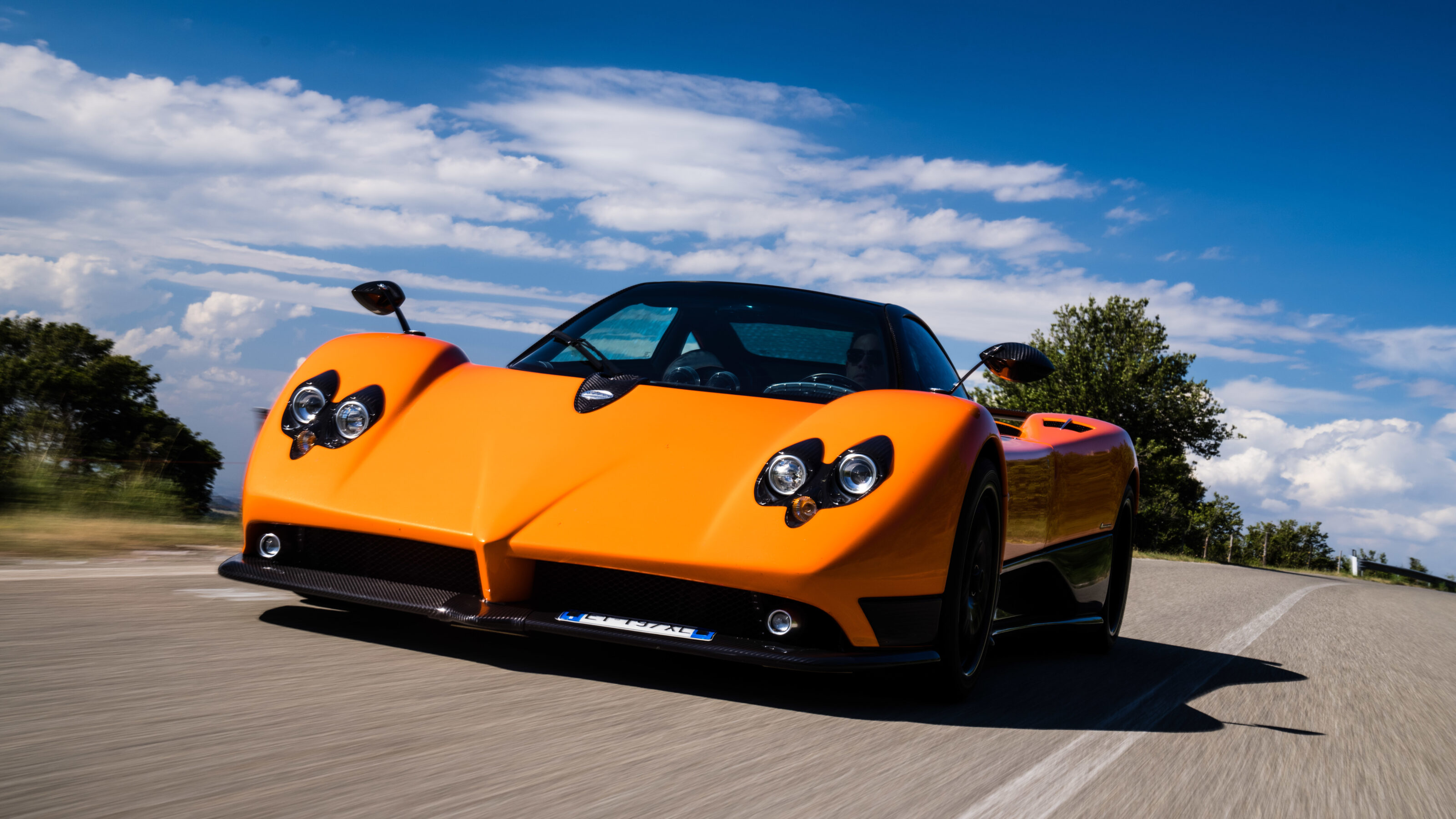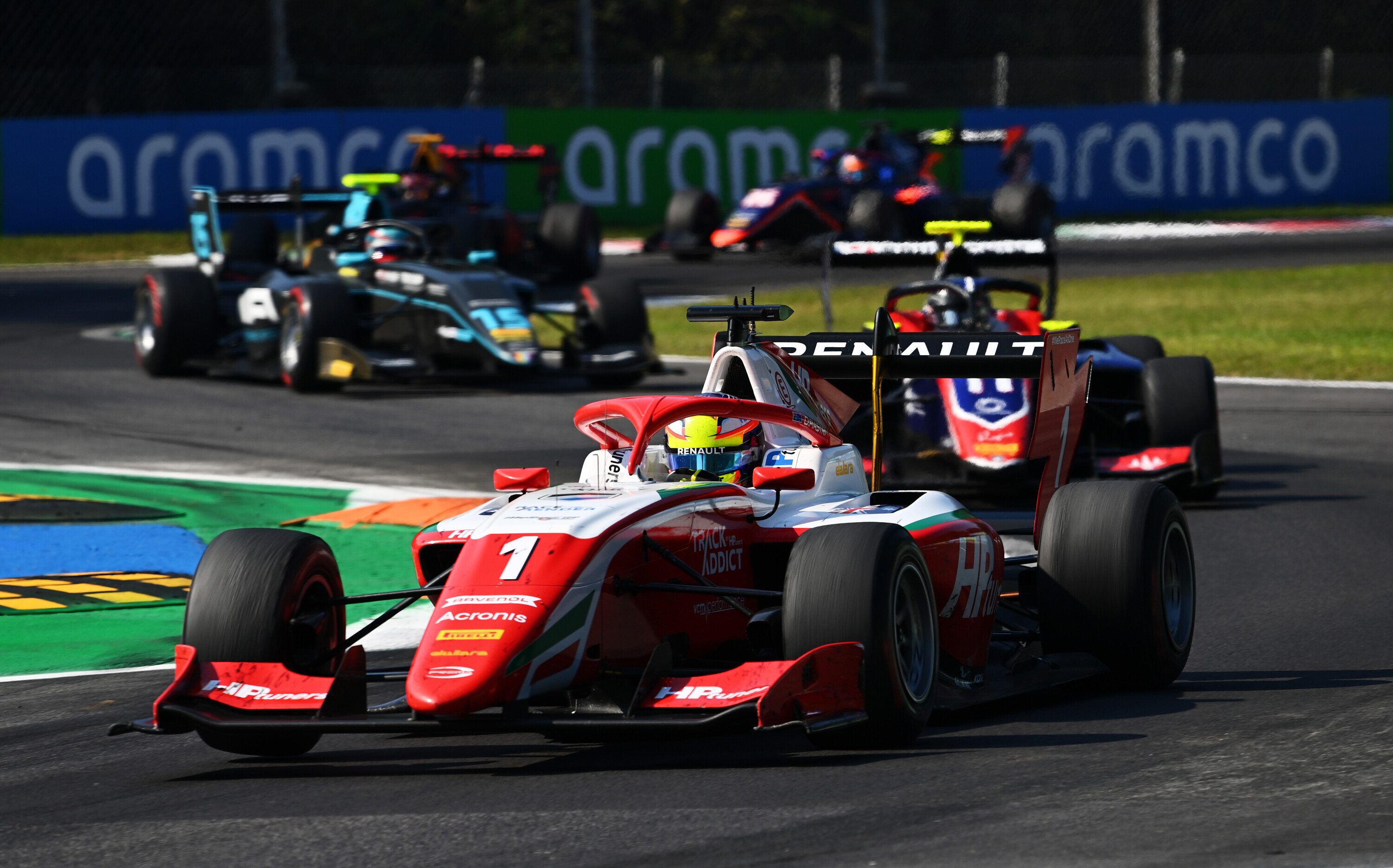Things we like
- Amazing engine
- Incredible soundtrack
- Presence to burn
Not so much
- Realising that the likelihood of owning one is minuscule at best
I confess that I write this as a Brit. Or pom. Whatever you prefer. I like to think of us as the idiots who stayed on the cold, sodden island just to annoy the French. Anyway, where am I going with this? Oh yes. The bloody E-type Jag. As a Brit/pom/idiot I’ve had the E-type Jag rammed down my throat by classic car magazines for about 1000 years. Every other month it’s another story on the E-type. It did 240km/h, y’know? Well, it didn’t. But the, ahem, ‘optimised’ press car did in the hands of The Autocar magazine on the Jabekke highwayzzzzzzzz…
I don’t care about the E-type. Never have. It’s a vintage car for me, not a classic. My classic cars are from the very late ’80s, the ’90s and the first decade of the 21st century. They have names like Skyline (apologies, I know that one still hurts), Makinen, GT3, Gallardo, Clio V6 or M3, F355, Integrale, Shamal. So when I heard about the new G-OLD tour around Modena, part of the annual Motor Valley Fest that celebrates the incredible engineering and craftsmanship in this region of Italy, my ears pricked up.
A celebration of modern classics on some of the greatest roads in Europe, plus a chance to finish up in the beautiful Piazza Grande, eat great food and wander the square and the surrounding area taking in displays from Ferrari, Lamborghini, Maserati and a host of other suppliers and specialists. I just need something from the turn of the millennium to turn up in. Italian, obviously. Manual gearbox, naturally aspirated engine. It’d be cool if it was rare and exotic. Pagani Zonda F coupe? That should do it.
We’ll join G-OLD later. First, we need to pick up a Zonda F from the Pagani Automobili S.P.A factory in San Cesario sul Panaro. No, I can’t quite believe I’m saying that, either. It’s not just any Zonda F. I guess there isn’t ‘just any’ F as just 25 coupes were built, but this one is the personal car of Horacio Pagani himself.
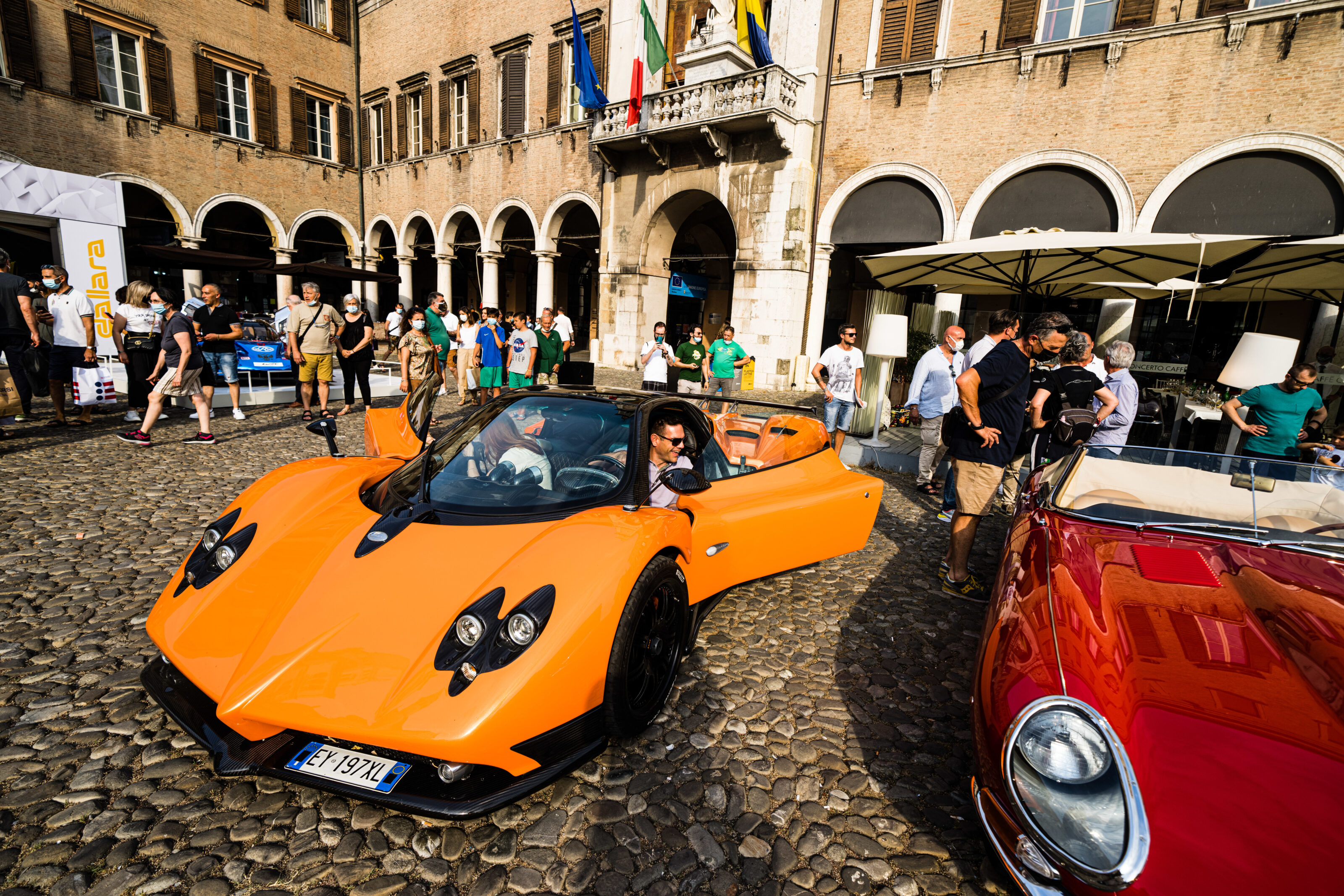
Chassis 91, handmade in 2007 and finished in Arancione St. Tropez and bare carbon fibre. The car has covered just 2500 kilometres and in 2019 underwent Pagani’s full Rinascimento (Renaissance) program to bring it up to as-new condition. I suspect it didn’t really need it, but the meticulous work acted as a good motivation to owners thinking of lavishing some money on their own Zonda. It is, simply, perfect.
The Zonda was a meteor strike to the old supercar world when it debuted at the Geneva Auto Salon in 1999, but nobody could have guessed quite the change it would effect in the market generally. Nor that this period would come to represent such a significant moment in the evolution of the sports and performance car generally.
Holding on to the evocative, immersive ingredients of the old – naturally aspirated engine, manual gearbox, hydraulic power assistance for steering and a real sense of organic connection – whilst embracing technology that would enhance dynamic performance and reduce mass, the Zonda could scarcely be more desirable or more relevant in 2021. If you trace the story of the supercar, which was written here in Italy’s ‘Motor Valley’, there’s a very strong case that it reaches its zenith with the Pagani Zonda.
You don’t need to know the history of the supercar, nor the extraordinary Horacio Pagani story for the Zonda F to hit you right in the guts. It literally pulsates with a kind of mystical charisma and makes your stomach flip just standing still and silent.
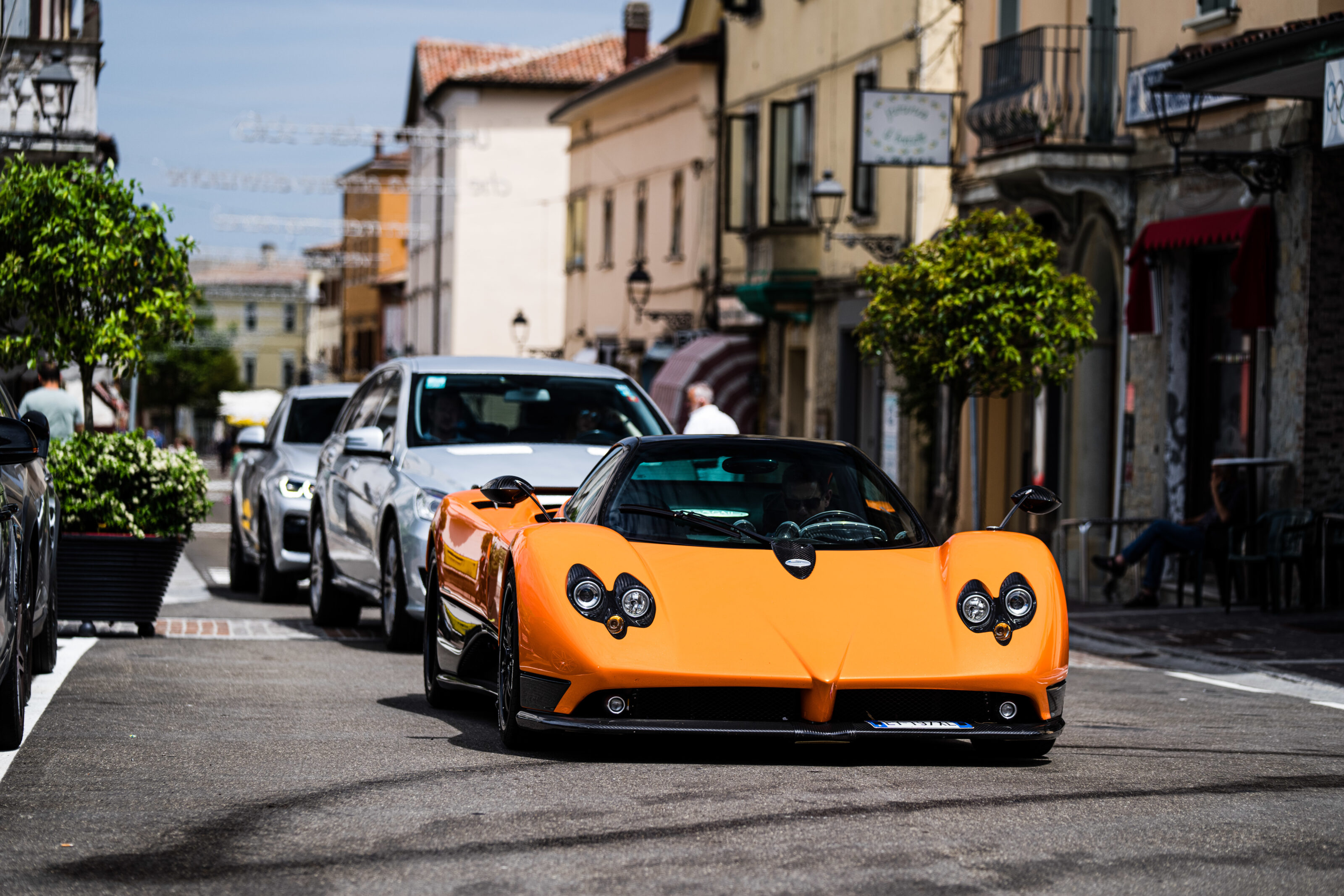
Swing open the door and the Zonda truly seems to embrace the benefits of Horacio’s favourite material.
If you asked a kid to draw you a supercar they wouldn’t come up with the Zonda. It requires too much imagination, too much skill to capture something of the essence of the great Group C machines and mix it with the drama, humour and pure joy of the supercar tradition. They’d sure as hell recognise it as a supercar, though. On a simmering Italian summer’s day and painted that vivid shade of orange it could hardly look more spectacular.
Of course, the Zonda is not just about drama. Beneath the composite skin is a carbon fibre tub, double wishbone suspension at each corner and the rear sub-frame cradles a 443kW 7.3-litre V12 engine from AMG. Remember, the Zonda came into the world when Lamborghini’s big, bad supercar had a chassis that looked like it had been put together by drunk scaffolders in preparation for the Red Bull soapbox challenge. The Zonda was more an Italian McLaren F1 than a sexier, more esoteric Diablo.
In fact, the very birth of this car is rooted in Lamborghini’s reluctance to adopt new technologies. Horacio, born in Argentina but with dreams that could probably only come to life in the Emilia-Romagna region, had found his way to Sant‘Agata in 1982 and in ’87 headed up the development of the experimental Countach Evoluzione.
Featuring a new composite chassis, carbon-Kevlar panels and a host of other trick components it was nearly 400kg lighter than the Quattrovalvole and performed on an entirely new plane. Horacio saw the, um, light. Lamborghini didn’t. So he left, founded Modena Design and, very soon after, Pagani Automobili.
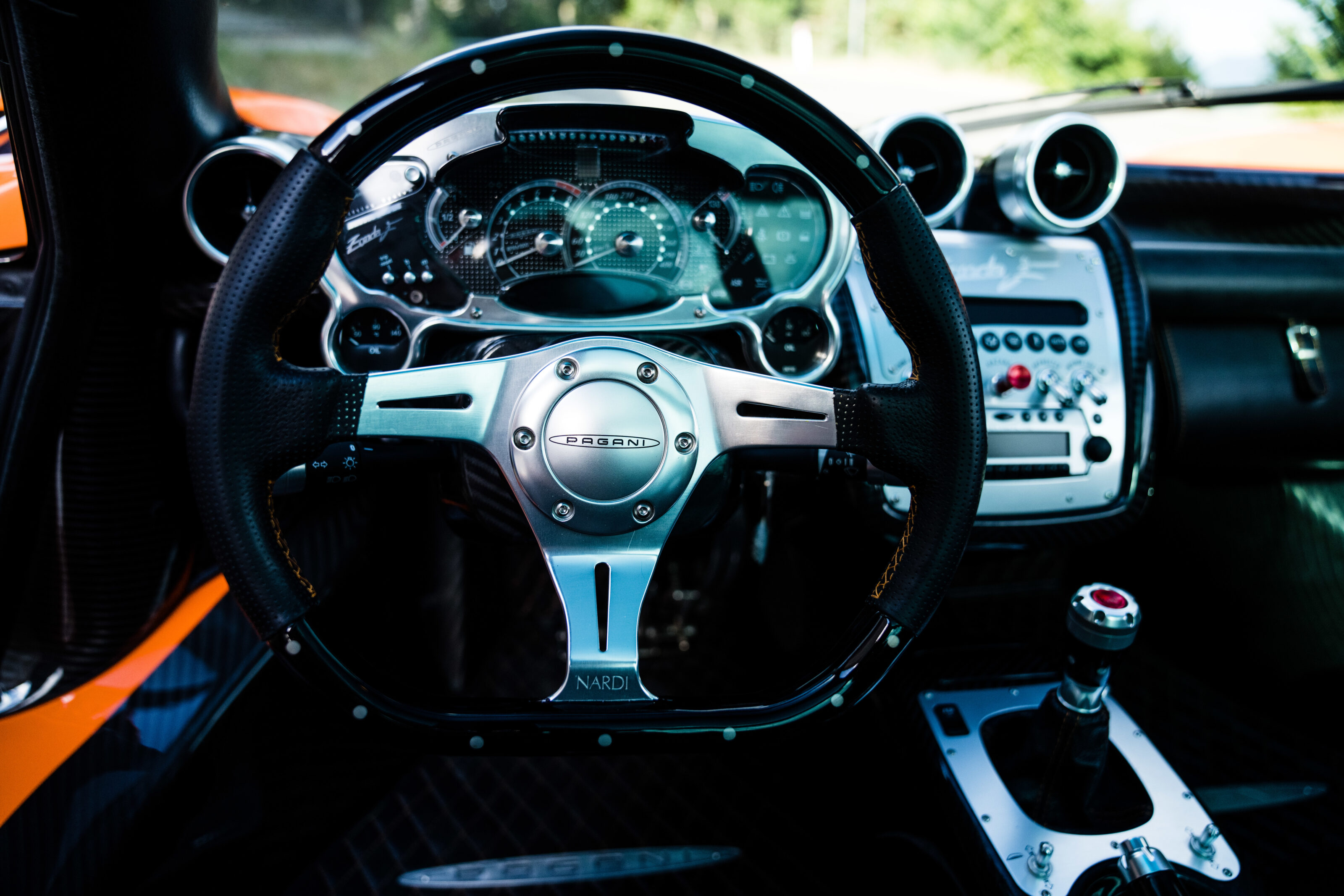
Swing open the door and the Zonda truly seems to embrace the benefits of Horacio’s favourite material. It’s feather light, a handshake to remind you that this full-size supercar weighs just 1230kg (dry), and reveals a cabin that’s a feast of shapes and jewel-like details but, most of all, perfectly matched, machined and lacquered carbon fibre.
In a mid-range BMW a few strips of carbon-fibre trim seems vaguely absurd and isn’t even that pretty. In the Zonda F it’s structural, dazzling, sculptural and, honestly, rather gorgeous. For some the intricate, busy interior will be too much but what it lacks in understated elegance it makes up for in carnival-like flamboyance.
It gets the details right. The flat-bottomed Nardi steering wheel is fabulous to hold, the circular floor-hinged pedals are a little unusual but take just seconds to master and the driving position and glass teardrop canopy provide a gorgeous view and a real sense of airiness. The front wings fall away abruptly and frame the view ahead and the elegant side mirrors mounted on those deliciously slender carbon-fibre stems give a great view of the road behind. That’s if you’re able to stop gawping at the taut rear wings and the edges of the carbon-fibre wing.
Twist the key, depress the red button mounted atop the gearlever and the M120-series AMG V12 wakes with a deep, mellow roar. It’s not brash like, say, a C63 S on start-up, but such is the depth and resonance that you can sense the scale of the engine. The steering requires some heft, which seems only right and proper, and the clutch needs a bit of muscle, too.
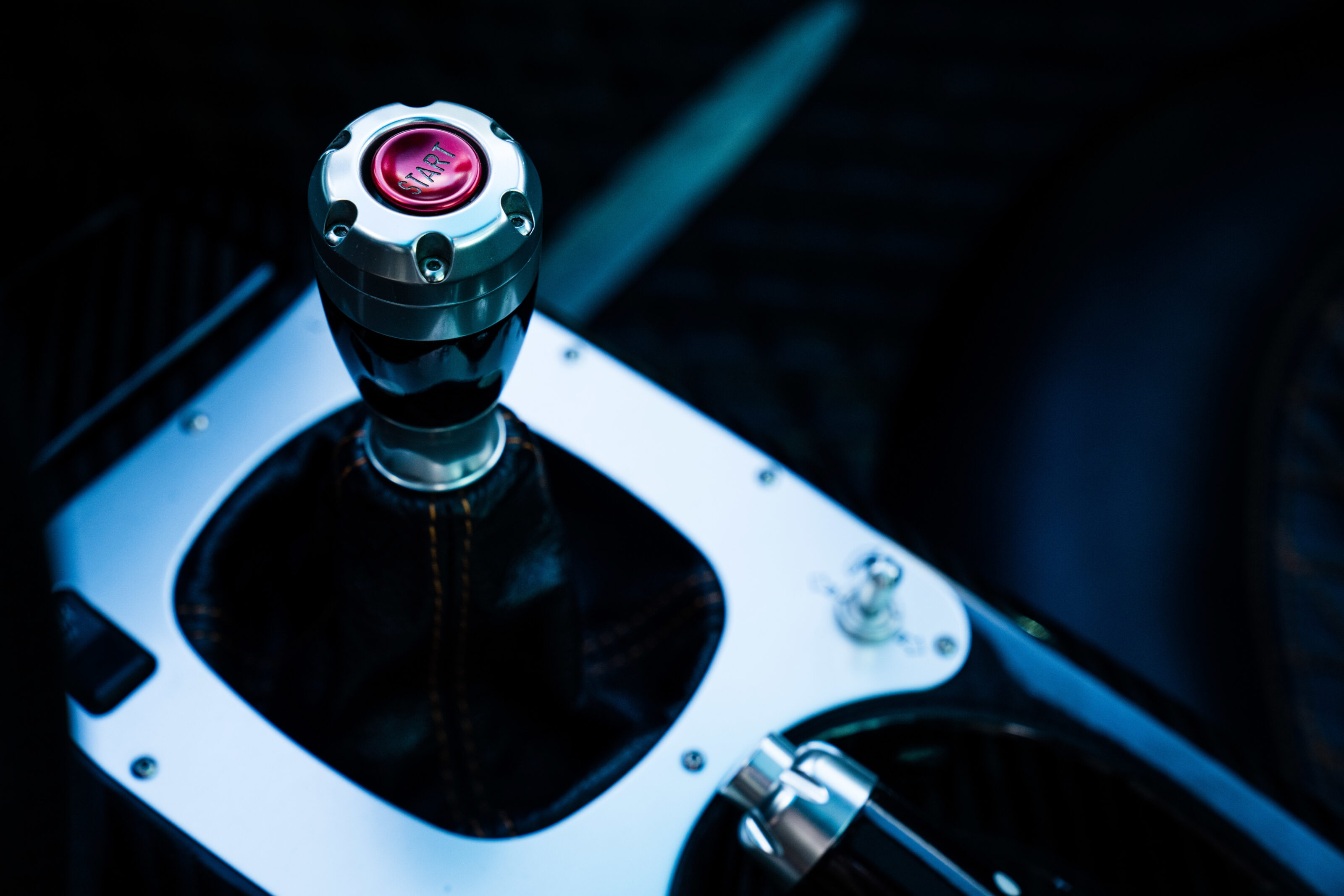
The six-speed Cima ’box is slightly less satisfying in its action. Light, hollow-feeling and just a little bit awkward to use, it’s perhaps the only thing you could describe as a ‘disappointment’. However, it’s a six-speed manual and for that I will give praise. The connection it brings is priceless. Subsequent Zondas introduced a padde-shift version of this ’box and it feels very outdated compared to modern dual-clutch systems. The F really is the sweet spot.
I haven’t explained the ‘F’, have I? Well, way back when Pagani was dreaming up his perfect supercar he needed an engine partner. A friend of his named Juan Manuel Fangio went about introducing his countryman and friend, Horacio, to the team he used to race for, Mercedes. The rest is history. So it’s F for Fangio. Which means it had better be bloody good to drive…
Oh, it’s good. The engine has all the torque you’d expect of that cubic capacity and in combination with the lightweight construction makes for effortless progress at low and medium speeds but there’s real bite, too.
Extend the engine beyond 4500rpm and it howls the purest, sonic almost sci-fi howl. It’s like the noise you’d expect to come out of a plasma blaster or something and it doesn’t so much cut the air into sharp fragments as charge it with energy and blast it into space. If you had any fear a German engine couldn’t work in an Italian supercar it seems laughable after one run to the rev limiter. Of course, being naturally aspirated, it’s also laser precise and has fantastic throttle response.
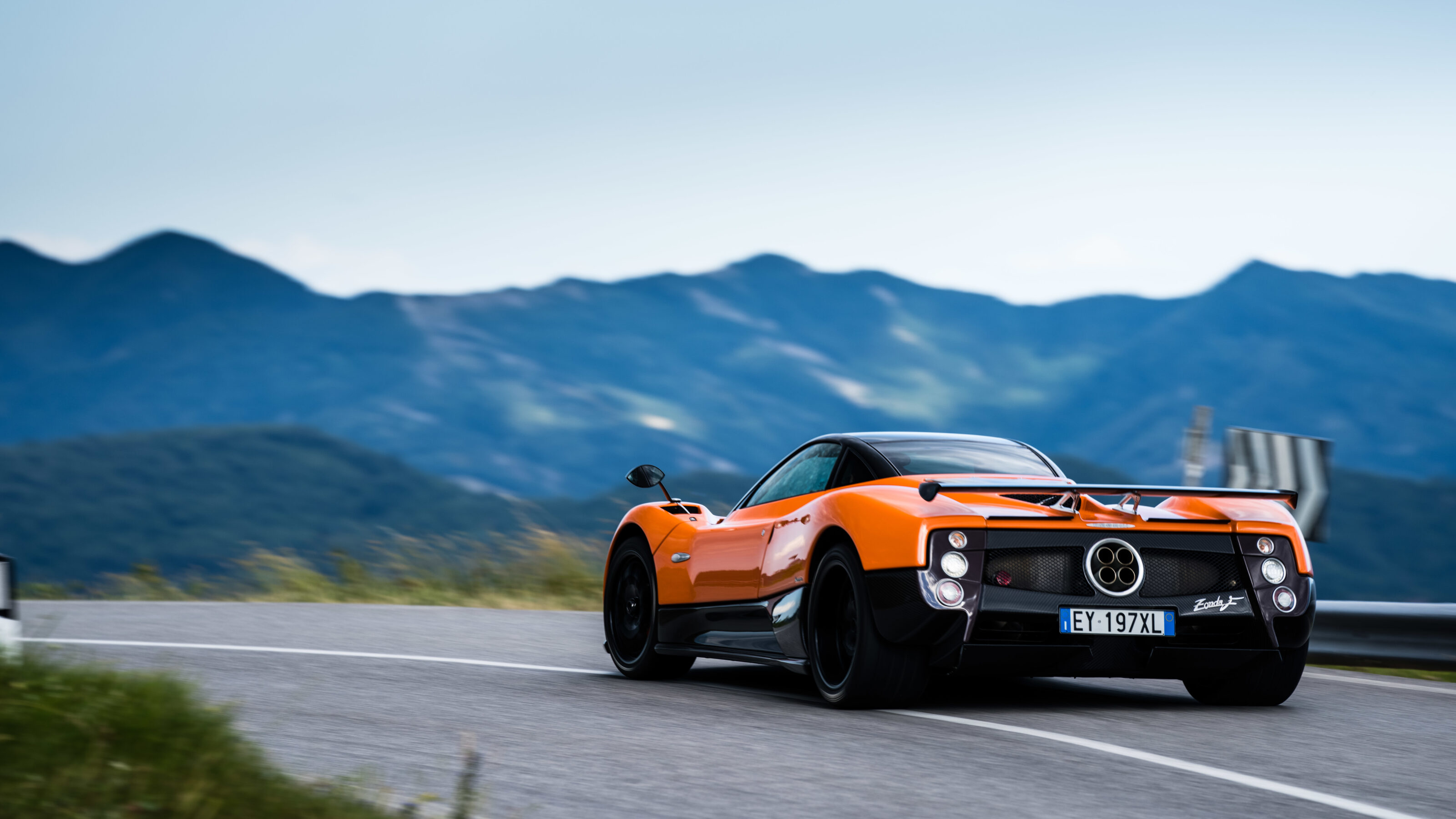
It’s the sense of precision and delicacy that really characterises the way the Zonda F goes about picking apart a road. The chassis structure feels as stiff as any new hypercar and that allows the suspension to be supple enough to suck-up the worst that even earthquake-damaged roads can throw at it but also pull the body tight, so that you feel you’re tracing the surface rather than floating above it.
With lovely, textural feedback through the steering, minute control of the engine and excellent feel and power from the carbon-ceramic brakes, the Zonda F remains a pretty devastating car even by today’s standards.
It doesn’t have the rock-solid body control of, say, a McLaren 765LT, nor the crazy, dizzying performance of an SF90, but it’s more than fast enough to live with all but the most committed lunatic in either.
Just how fast is made clear the next day when we finally join up with the G-OLD convoy. There are two groups – Youngtimers and Modern Supercars – and we seem to be floating between the two. Even in a group including F355, 550 Maranello, a perfect E46 M3 and Z3 M Coupe, plus some real rarities like a Mercedes 500E and an E34 M5 with a turbocharger the size of Rome, it’s clear the Zonda is The Main Event. How could it not be?
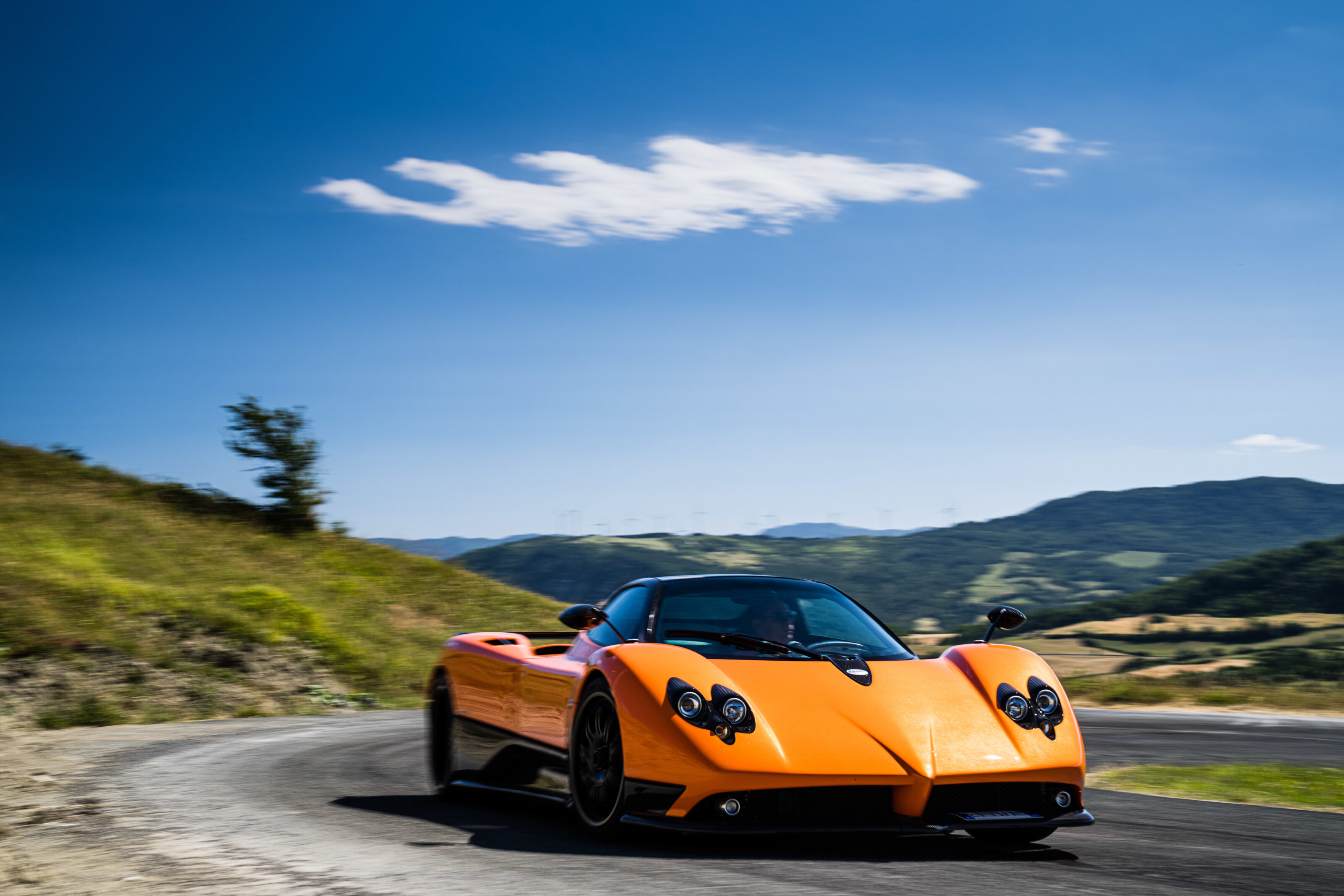
A young guy sidles over to pore over the Zonda. He’s here with his Dad, in the Modern Supercar group and a Ferrari 488GTB. Or is it an F8 Tributo? Who cares. Anyway, he asks the power output and it strikes me I don’t actually know.
It seems so irrelevant when all these cars are so unbelievably potent. “I think 600bhp,” I reply. He’s Italian so kilowatts wouldn’t cut it. “Less than yours, anyway,” I continue. He chuckles. “Yeah… just 150bhp or so less! It’s beautiful, though.” I feel patronised. Later, when his Dad is right up my chuff as we emerge from another idyllic Italian village and a ribbon of tarmac clinging to the side of the Apennines opens out ahead, I decide to demonstrate that the old girl can still cut it.
To be fair the Ferrari stays in my mirrors for two or three corners, but the Zonda F is in full flight and eases away. It’s so confidence inspiring. Yes, it feels a little wide and over big undulations I’d want a touch more control (of course, this being a Pagani you can have the set-up finalised in any direction you so desire), but there’s such inherent agility that it feels perfectly at home even on roads that logic suggests are a size too small. Grip runs out at the front first but the understeer is measured rather than messy, plus you have 7.3-litres of AMG goodness to balance that out.
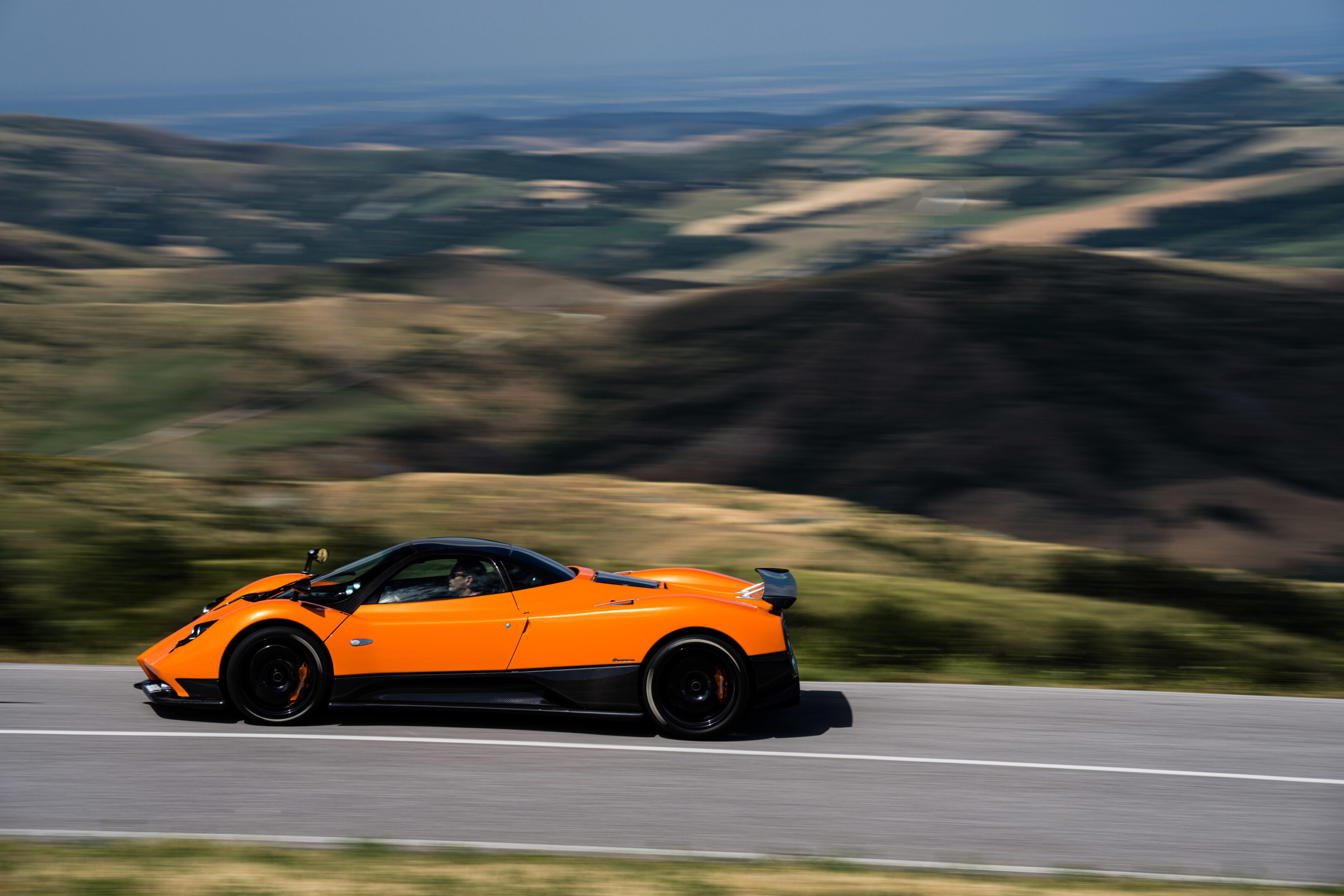
Terrifyingly, to get the Zonda really flowing requires disabling the ASR traction control as it’s severe and intervenes too early. Yet after the initial panic of prodding the button you soon relax into the intuitive dynamics. You can spin-up those rear wheels but it takes determination and the oversteer that follows is progressive and predictable. The Ferrari doesn’t stand a chance.
Our final miles with the Zonda F are literally in the wheel tracks of Horacio Pagani. The G-OLD guys and girls join up with him after a factory tour and we all trundle into the centre of Modena together. The Motor Valley Fest is in full swing and the orange carbon fibre spaceship is, once again, all anyone cares about.
The Zonda really is a remarkable car. The ‘last’ versions were meant to be the Cinque and Cinque roadster, all the way back in 2009 and 2010. But it won’t die. People clamour to own them, or to upgrade existing cars to ‘760’ specification – the final development of the AMG engine producing 559kW. This Zonda F, which would have cost €550,000 plus taxes in 2007, is now worth €$7m. The absolutely, definitely, probably-not-really final ‘final’ cars will be two further Zonda HP Barchettas, similar to a car shown at Pebble Beach in 2017. They are priced at €$15m each.
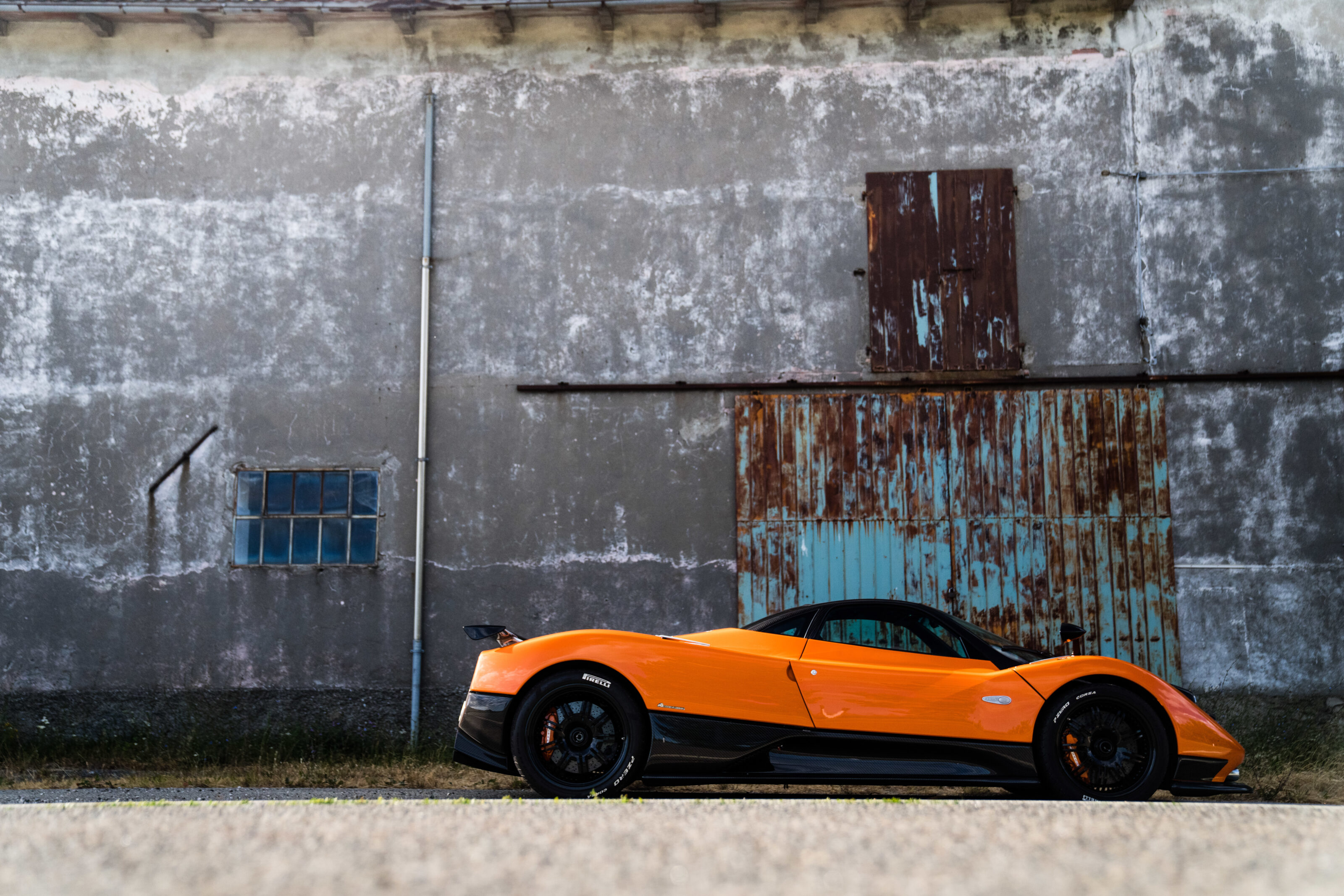
The values are completely nuts. But I see the appeal. The cars are stunning to behold, the personal story of Horacio is pure fairy-tale and the Zonda really does sit at the most amazing point in motoring history. Blessed with performance, materials technology, reliability and safety that would hitherto be unthinkable but not saddled with endless electronics or bloated by spiralling power outputs and hybrid or EV powertrains, the Zonda isn’t so much a classic car as a timeless statement of supercar drama and excitement.
I would wrap this all up neatly with some derogatory comment about the E-type Jag. But as we inch our way to the Piazza Grande in convoy, Horacio is just ahead in his beloved bright red E-type Roadster looking very happy indeed. Oh well, nobody’s perfect.
2006 Pagani Zonda F specifications
| Body: | 2-door, 2-seat coupe |
|---|---|
| Drive: | rear-wheel |
| Engine: | 7291cc V12, DOHC, 48v |
| Power: | 443kW @ 6150rpm |
| Torque: | 760Nm @ 4000rpm |
| Transmission: | 6-speed manual |
| Weight: | 1230kg (dry) |
| Suspension: | double A-arms, pull rod helical springs, adjustable dampers anti-roll bar (f/r) |
| Wheels: | 19.0-inch (f); 20.0-inch (r) |
| Tyres: | 255/35 ZR19 (f); 335/30 ZR20 (r) Michelin Pilot Sport Cup 2 |
| Price: | $11.2m |
Things we like
- Amazing engine
- Incredible soundtrack
- Presence to burn
Not so much
- Realising that the likelihood of owning one is minuscule at best
We recommend
-
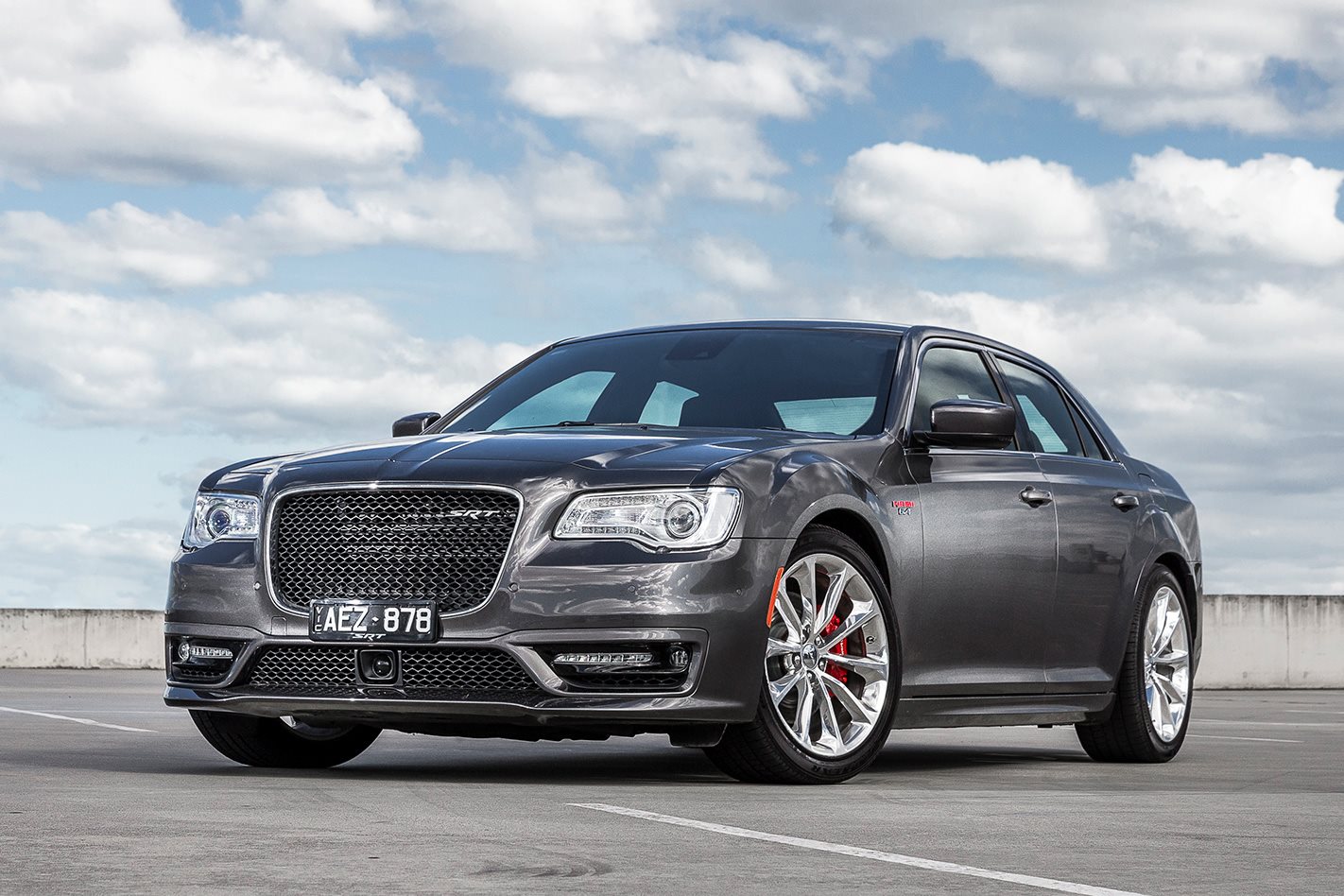 Features
FeaturesThe performance cars disappearing from sale in Australia this year
Renowned nameplates are on hiatus as the list of affordable, focused offerings shrinks ahead of an electrified return – for some
-
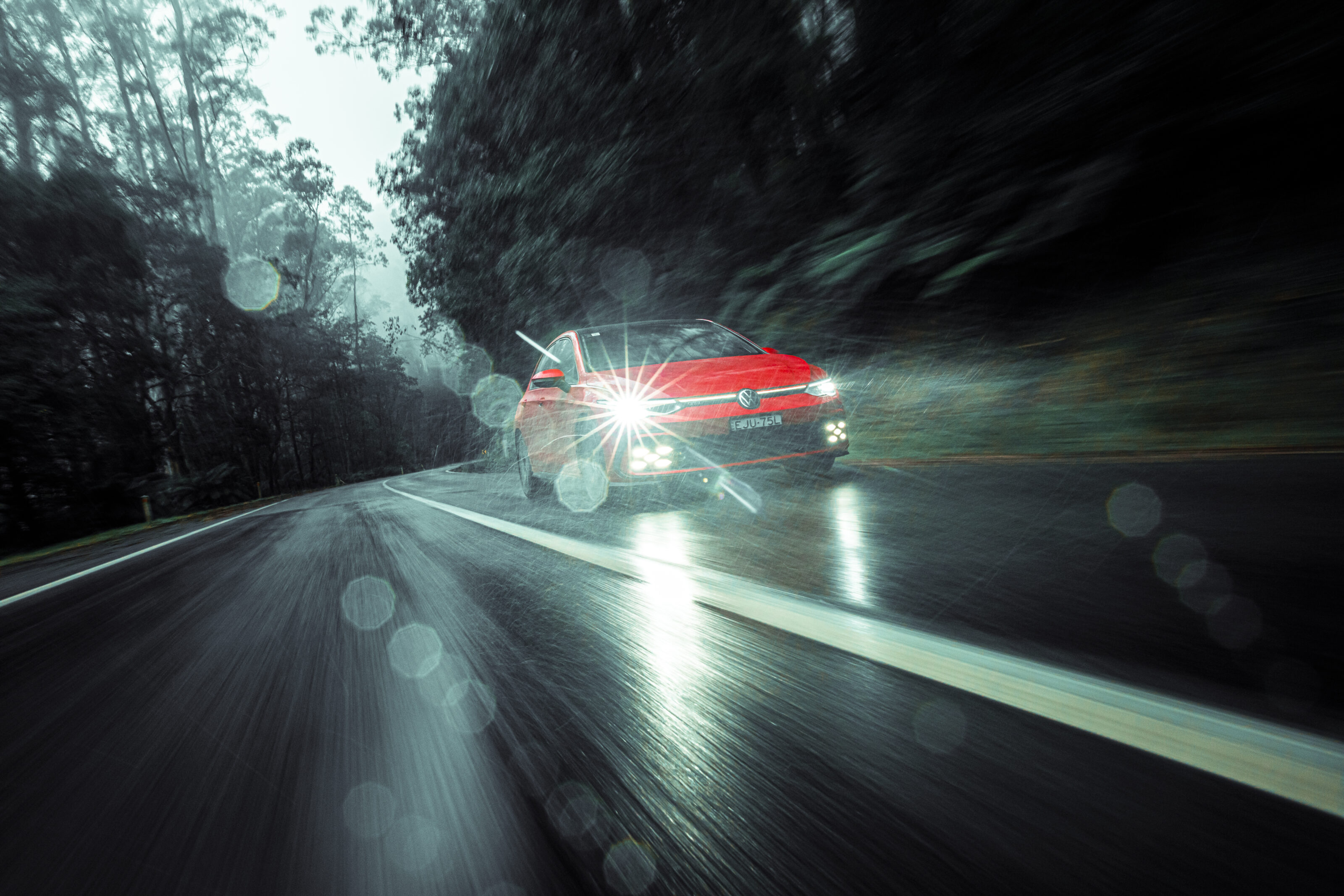 Features
Features2021 Volkswagen Golf GTI feature review
Volkswagen isn't content with resting on its laurels with the MK8 Golf GTI. But has it messed with a perennially winning formula?
-
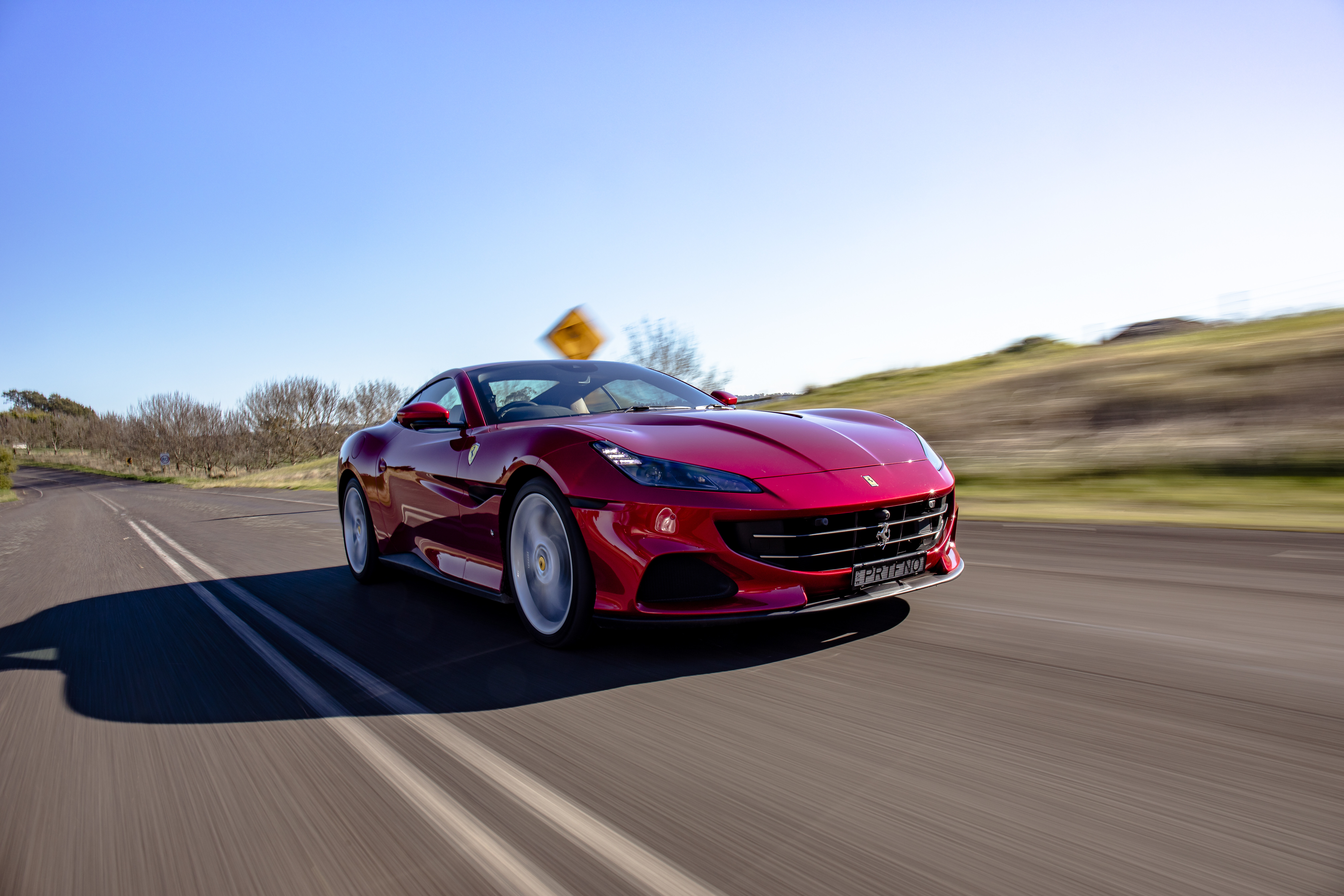 Features
FeaturesChasing the sun with the 2021 Ferrari Portofino M
Has Ferrari’s poser become a proper Prancing Horse? We take the back roads to San Remo in the new Portofino M to find out

